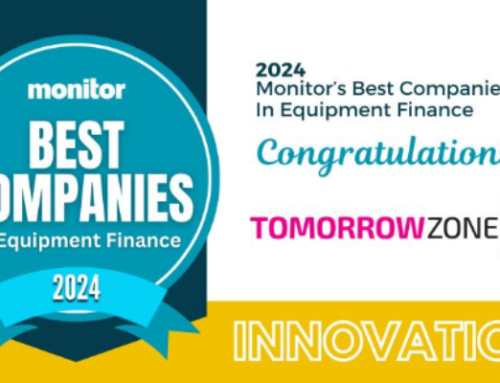
Written by Alistair Canal, Chief Growth Officer of Syndifi, this article discusses the demand of technology adoption and adaptation in today’s dynamic and evolving world of work. Stating, “In this survival of the fittest landscape, forward thinking companies that are inclined to innovate are more likely to succeed than companies that find themselves in a reactive position.”
He elaborates on this by going on to explain that organizations that have assessed their needs can better evaluate different technology types that will help them to reach their goals and best serve the company as a whole.
See how Innovation leader, Deborah Reuben, CEO and founder of TomorrowZone®, weighs in on this approach.
This article was originally published by MonitorDaily in March 2023.
Reprinted with permission from the author.
In today’s dynamic and evolving world of work, the market does not simply suggest technology adoption — it demands it. The pursuit of organizational digital transformation presents new opportunities that have the potential to transform businesses and turn entire industries on their heads. In this survival of the fittest landscape, forward thinking companies that are inclined to innovate are more likely to succeed than companies that find themselves in a reactive position. Thankfully, the daunting task of evaluating and implementing new technology can be made less onerous through the thoughtful prioritization of goals, the nurturing of an agile workforce and the gift of time.
Nearly 90% of respondents to a global survey of managers and executives conducted by MIT Sloan Management Review and Deloitte anticipated that their industries will be disrupted by digital trends to a great or moderate extent, but only 44% said their organizations were adequately preparing for the disruptions to come. Why is this? Why do less than 50% of executives report being ready for industry changes resulting from digital trends? It certainly isn’t a lack of technology choices. Nor is it a lack of awareness of the need for preparedness. So what is it? Perhaps it is simply this: it looks a lot more complicated than it really is. Thankfully, it isn’t complicated at all.
Set the Goals, Choose the Tool
Perhaps the greatest factor inhibiting technology adoption is technology overload. The sheer abundance of technology and software applications has created a disorienting fog that makes navigation more difficult. The solution to this problem is simple. Don’t start with the tech. Start with the needs of the company and then search for hardware and software that can satisfy those needs. Think about it this way. What happens during a trip to the grocery store without a list? The bag that lands on the kitchen counter has everything except the one item that necessitated the grocery run in the first place. In this same way, a search for tech that is not governed and directed by a thoughtful list of company needs and goals will yield similarly unsatisfying results.
An effective technology evaluation process starts with first identifying internal problems or pain points. Perhaps efficiencies need to be created through the automation of certain routine tasks. Perhaps redundancies need to be eliminated. Maybe there is a need for greater security. Making a “wish list” of thoughtful company goals will ensure that the tech selected is the tool of the company and not the other way around. Once organizations have assessed their needs, the evaluation of different types of technologies will now be more targeted and clear-eyed. With a “wish list” in hand, decision-makers can exercise effective due diligence by asking more productive questions of potential tech providers, weighing pros and cons of each solution and selecting technologies that will best serve the actual needs of the company.
Deborah Reuben, CEO and founder of TomorrowZone, champions this approach in her own work: “Successful digital transformation efforts begin before tool selection; they never start with a software shopping list; technology is the last consideration. Instead, developing a big picture together as a team, including multiple perspectives, and co-creating a holistic shared understanding of the current state of things and your desired future vision is the starting point.”
Listen to Employees
Another roadblock to productive technology adoption is employee resistance. Even a resource-rich business that is bullish on investing in the latest and greatest technology and keenly focused on the overarching goals of the company will flounder without the willingness and enthusiasm of employees. Much of this resistance comes from the lack of a shared perspective. According to PwC’s Tech at Work report, 90% of C-suite executives agree their company pays attention to employees’ needs when introducing new technology, but only about half (53%) of staff say the same. This disconnect requires resolution. Again, the solution to this challenge is not complicated, but it does require attention and diligence.
Employees are the ones using the technology that leadership selects. For this reason, employees need to be an integral part of those “pain point” conversations mentioned above. The ground-level insight that employees have regarding the actual workings of the company is an invaluable resource in identifying the needs of the company and offering suggestions for improvement. Moreover, the disconnect of perception and its accompanying deleterious effects are mitigated when the process of technology adoption is shared. As Reuben points out, “It’s hard to resist what you helped create.” In other words, an agile and responsive workforce is nurtured when leadership invests their time and attention on listening to employees and using that feedback to refine the “wish list” that governs technology selection and adoption plans.
Make Haste Slowly
Lastly, once a company has carefully selected the right tech tool for the job, executives must give themselves and their employees the gift of time. Common wisdom declares the value of taking the time to complete a task well and, therefore, once. The same holds true in the context of technology adoption. Every member of the company who is required to make the best use of the tech that has been selected must also be given the time to learn how to use it well. This requires a temporary adjustment in expectations regarding productivity and proficiency. The train has to slow down enough to get everyone on board. But the reward is excellent because, when the train gets back up to speed, it will work better than it ever has before.
Reuben provides another useful analogy to help clarify the merit of making haste slowly. “It may feel like losing momentum — to invest time — but like a slingshot, strategically pulling back to do this right can propel you forward to shape your desired future.”
While on the surface, the use and application of new technologies has become practically ubiquitous across the global business landscape, there are still many industries and organizations that have fallen behind. Even among the willing, technology adoption at an organizational level is notoriously slow and difficult. But, truly, it doesn’t have to be. While there is no exact science to digital transformation, a common sense path forward exists. Lead with the needs and goals of the company, and let these govern the selection of technology. Resolve the disconnect between decision makers and employees by actively seeking out employees’ ideas. And take the time, slow down and adjust expectations to implement the selected technology, once and well.
ABOUT THE AUTHOR: Alistair Canal is chief growth officer of Syndifi. During the past 20 years he has helped numerous finance organizations adopt and leverage technology to grow their businesses. Syndifi is a technology organization committed to helping equipment finance companies syndicate smarter. To learn more, visit Syndifi.com.
Read the full article here.





